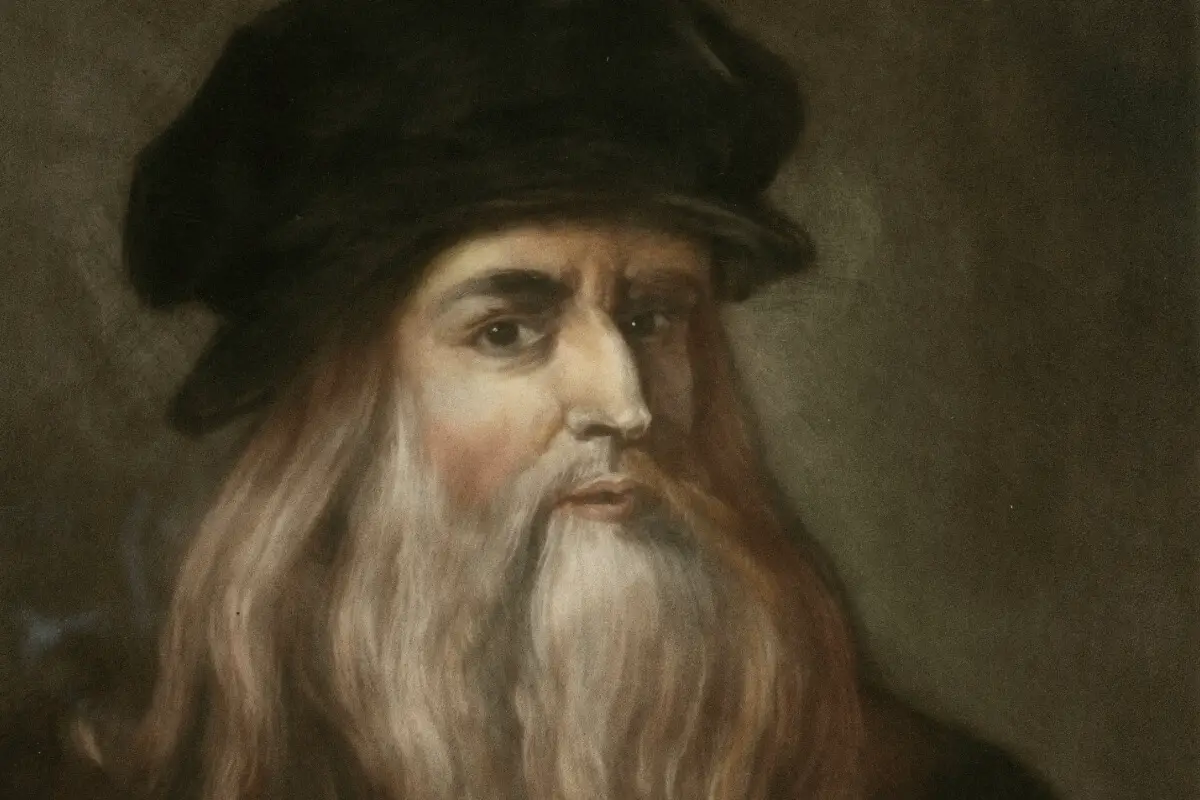Leonardo da Vinci stands as one of the most extraordinary polymaths in the tapestry of human history, a luminary of the Renaissance whose work at the intersection of art and science continues to captivate the world centuries after his time. This exploration ventures into the heart of da Vinci’s inventive spirit, unraveling the ingenious techniques and stylistic advancements that rendered him a seminal force in the evolution of visual arts.
Through the misty layers of his sfumato, the dramatic illumination of chiaroscuro, and the mastering of linear perspective, Leonardo’s artistry proves not just aesthetically groundbreaking but packed with pursuit for truth, an aspiration mirrored in his meticulous anatomical drawings and relentless curiosity about the world around him.
Table of Contents
- The Technique and Style of da Vinci
- Masterpieces and Their Historical Context
- Leonardo da Vinci’s Masterpieces: A Tapestry of Historical Influences
- The Cultural Renaissance: A Revival of Classical Wisdom
- The Humanism Movement: Focusing on Human Potential and Experience
- Patronage: The Role of the Elite
- Religious Influences: An Age of Piety and Devotion
- Wars and Political Turmoil: A Reflection of Conflict
- Scientific Inquiries and Artistic Innovation
- The Legacy of Leonardo’s Techniques
- Related Questions
The Technique and Style of da Vinci
Leonardo da Vinci’s Pioneering Techniques and the Renaissance Art Movement
Leonardo da Vinci stands as a colossus in art history, his works embodying the very spirit and intellect of the Renaissance period. This era, which marked a rebirth of learning and culture in Europe after the medieval times, benefited immensely from Leonardo’s innovative approach to art. His techniques and practices significantly shaped Renaissance art, leaving a legacy that still endures.
Chiaroscuro and Sfumato: Mastery of Light and Shade
Among the most significant contributions of Leonardo da Vinci to Renaissance art was his mastery of chiaroscuro. This technique plays with the stark contrasts between light and dark to give a three-dimensional effect to flat surfaces. Da Vinci’s grasp of light and shadow highlighted the effects of light on various surfaces, sculpting the form of his subjects with subtle gradients that displayed a profound understanding of human anatomy and the behaviors of light.
Equally groundbreaking was his development of sufumato, a technique in which colors and tones are blended to gradually fade into one another, producing soft, imperceptible transitions. This approach enabled Leonardo to capture the delicate nuances of facial expressions and the softness of flesh, lending his figures an ethereal, lifelike presence that was almost unparalleled among his contemporaries.
Scientific Accuracy and Anatomical Precision
Leonardo’s insatiable curiosity and dedication to scientific accuracy drove him to dissect human and animal bodies. This anatomy study led to a greater understanding of musculature and the mechanics of the human form, further enhancing the realism and naturalism of his figures. The anatomical precision in his drawings and paintings was a tribute to his scientific rigor and an influential tutorial for artists of his time and beyond.
Perspective and Proportion
Renaissance art is also known for its revival of perspective, and here, too, Leonardo’s touch is evident. He used linear perspective to create the illusion of depth on a flat canvas, leading the viewer’s eye into the picture as if gazing through a window into another world. His Last Supper is a masterful demonstration of perspective, inviting deep contemplation into the space composition within art.
Leonardo’s Varied Innovations
The polymath did not stop with these techniques; his endless creativity led to experiments with varying artistic media and methods. From frescos to oil paints, his versatility and innovative mixing of materials allowed for a range of effects that expanded the artistic vocabulary of the Renaissance.
The aforementioned facets of Leonardo da Vinci’s techniques collectively enriched the art of the Renaissance. His profound impact is still studied and revered in modern times, with contemporary artists and scholars seeking to understand and emulate his work. Leonardo’s passion for art and science, illustrated in his detailed journals and sketches, remains a testament to his enduring influence on the arts and beyond. It can be convincingly argued that without the pioneering efforts of Leonardo da Vinci, Renaissance art, as we know it, would not exist.
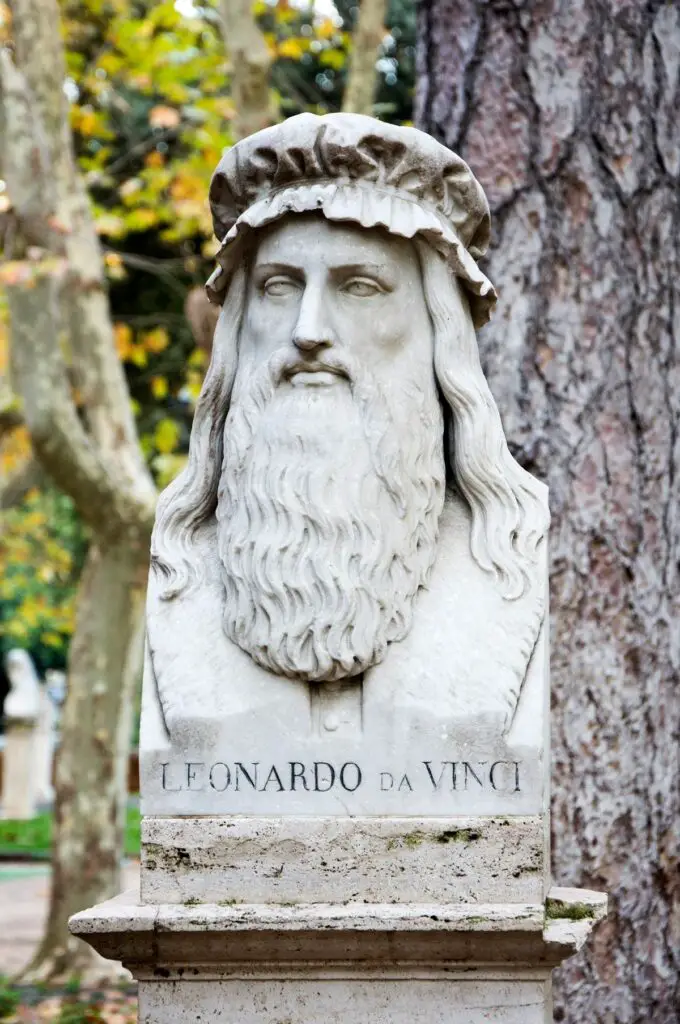
Masterpieces and Their Historical Context
Leonardo da Vinci’s Masterpieces: A Tapestry of Historical Influences
The indelible impact of historical context is manifest in the works of Leonardo da Vinci, a polymath of the Italian Renaissance whose masterpieces are studied with reverence. Though chiaroscuro, sfumato, scientific precision, and innovations in perspective stand as testaments to his genius, broader historical influences are also woven into the very fabric of his art.
The Cultural Renaissance: A Revival of Classical Wisdom
The Italian Renaissance, marked by the revival of classical philosophy, literature, and art, profoundly influenced Leonardo. The resurgence of interest in the works of ancient Greece and Rome is echoed in his humanist subjects and idealized forms. Studying classical sculptures and texts, Leonardo imbued his works with a sense of balance and harmony that mirrored the aesthetics of antiquity.
The Humanism Movement: Focusing on Human Potential and Experience
Humanism, a Renaissance movement that prioritized human potential and experience, is pervasive in Leonardo’s depiction of the human condition. His portraits are not merely physiological studies; they delve into the psyche of his subjects, reflecting the era’s introspective inquiry into human nature. In “The Last Supper,” the apostles are rendered with varied, genuine emotional responses, highlighting the Renaissance humanist focus on individual experience.
Patronage: The Role of the Elite
The patronage system of the era also shaped Leonardo’s works. Commissioned by influential families like the Medicis and Sforzas, much of Leonardo’s art was created to showcase the power and intellect of his patrons.
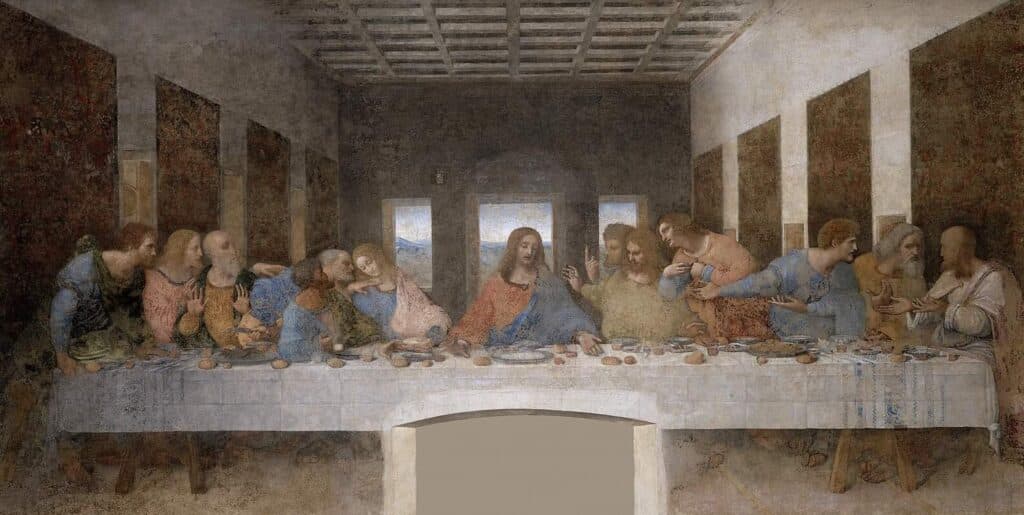
The grandeur of “The Last Supper,” painted for the Dominican monastery of Santa Maria delle Grazie, underlines the Sforza family’s influence and patronage’s role in determining content and style.
Religious Influences: An Age of Piety and Devotion
Despite the rise of humanism, the Renaissance remained deeply entwined with Christian faith, as evident in Leonardo’s religious compositions. “Virgin of the Rocks” demonstrates this blend of religious reverence with detailed naturalism. Leonardo wove together the theological symbolism prevalent in the era with a realist portrayal of nature, showing his comprehensive knowledge and the inseparable link between faith and art.
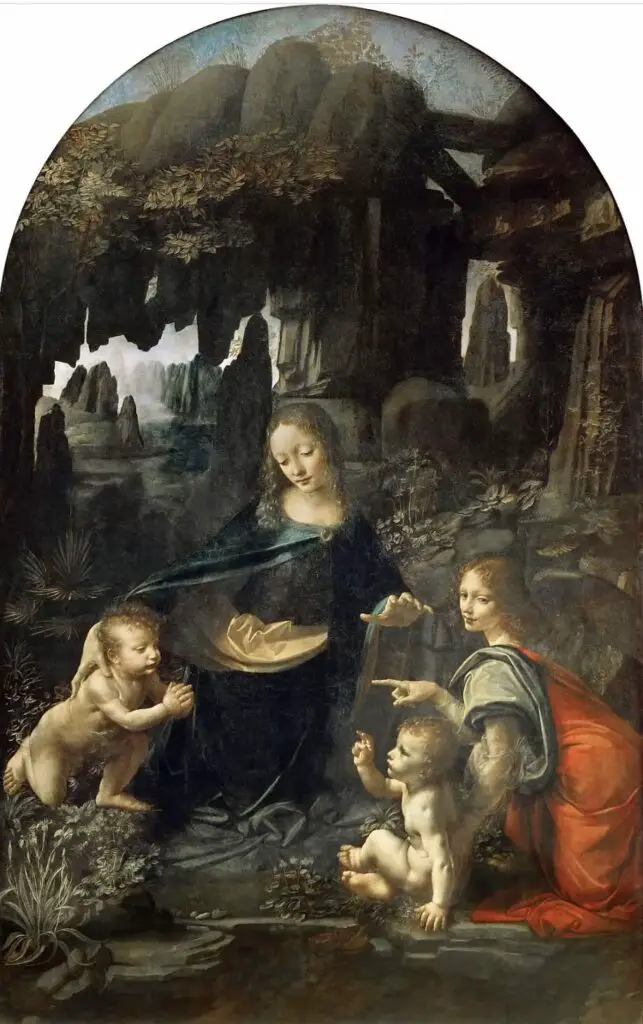
Wars and Political Turmoil: A Reflection of Conflict
Finally, the turbulence of Italian politics during Leonardo’s time, marked by conflicts and regional wars, subtly influenced his work. The sense of movement and tension in his battle sketches and the somber undertones of works like “St. John the Baptist” echo the state of Italy’s divided city-states.
In examining Leonardo’s masterpieces, one discerns not merely the strokes of a master artist but the historical currents of an era. His unparalleled fusion of historical influence with innovation continues to captivate and inspire admiration across centuries. Through his works, a vivid tableau of the Italian Renaissance emerges, reminding us that art is never created in isolation but is inherently shaped by the times it springs from.
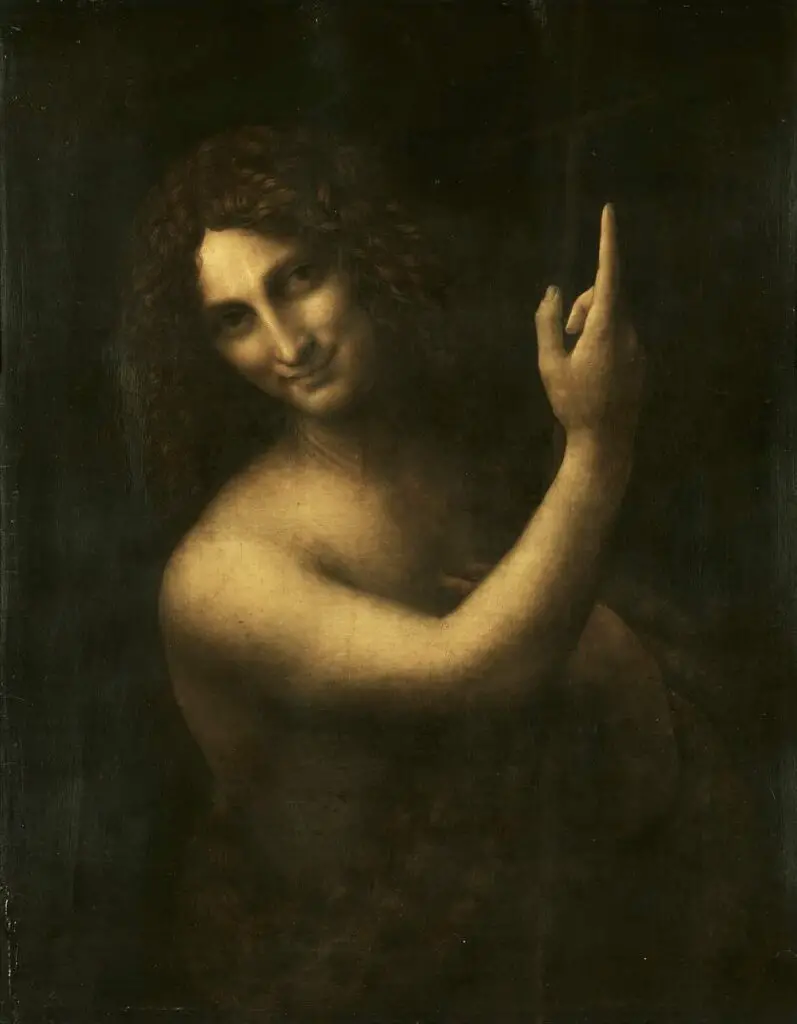
Scientific Inquiries and Artistic Innovation
Leonardo da Vinci’s scientific pursuits were not merely a side interest but integral to his artistry and contributed profoundly to his reputation as a master Renaissance polymath. His voracious curiosity and dedication to understanding the natural world around him drove his artistic evolution.
One example of this intersection between art and science can be found in Leonardo’s exploration of hydrodynamics. His extensive studies of water, meticulously recorded in his notebooks, informed how he rendered the aquatic elements in his paintings. He understood how light interacted with water and how it moved, which he used to imbue his artwork with a lifelike fluidity that was unparalleled at the time.
Leonardo’s deep interest in botany also significantly influenced his work. His detailed observations of plant life, coupled with an understanding of the rules governing the growth patterns of vegetation, allowed him to infuse his backgrounds with a lush, organic feel that helped his subjects come alive. He didn’t merely paint plants as decoration; he painted them with an empirical understanding of their anatomy, making his artistic rendition of nature credible and striking.
Furthermore, Leonardo’s architectural and engineering studies enriched his artistic compositions. Leonardo’s sketches of buildings, fortresses, and machinery showcase a fundamental grasp of structural integrity and mechanical function. This knowledge translated into his paintings and drawings, where he often incorporated complex architectural elements, demonstrating an intuitive understanding of spatial relationships. The depth and realism evoked in these architectural portrayals could not have been achieved without a profound scientific grounding.
Lastly, Leonardo’s passion for scientific innovation led to the development of new painting techniques, expanding visual expression possibilities. He experimented with various mixtures of paints and tried unusual application techniques, an endeavor that acted as a forerunner to many modern painting methods. Not all of his experiments were successful; his quest for perfection sometimes led to deterioration in his works over time. However, this willingness to experiment boldly, grounded in empirical observation and a desire for continuous improvement, genuinely sets Leonardo apart as a beacon of scientific and artistic synergy.
Leonardo da Vinci’s relentless drive to understand the intricacies of the world did more than produce volumes of notes and observations. It propelled his artistic innovation, blending science and art into a symbiotic relationship that revolutionized how we perceive both fields. His work remains an enduring testament to the power of interdisciplinary study and the potential of human creativity when fueled by unbounded curiosity.
The Legacy of Leonardo’s Techniques
Leonardo da Vinci, an emblematic figure of the Renaissance, has imparted a lasting influence extending far beyond his historical era, permeating modern art in various ways. The reverberations of his techniques, characterized by an astute combination of artistry and scientific inquiry, have spurred innovation among subsequent generations of artists.
Among the most salient of these methodologies is the artist’s use of layering in his paintings, which allows for an exquisite texture rendering and a captivating illusion of depth. Leonardo’s employing successive layers of translucent paint to create rich, complex colors and detailed texture effects—a method born from his acute observational precision and ceaseless experimentation—has profoundly shaped the modern understanding of how light interacts with surfaces. Contemporary artists frequently employ this technique to impart realism and vibrancy.
Furthermore, da Vinci’s inventive approach to materials has led to a proliferation of mixed media art. His relentless quest for novel media and surfaces laid the groundwork for current practices where artists combine disparate materials such as acrylics, oils, and found objects to achieve desired aesthetic outcomes. These explorations enhance the sensory experience of artwork and challenge the viewer’s perception, a concept that traces its origins back to the Renaissance polymath’s studio.
Da Vinci’s drawings and preparatory sketches also instantiate a foundational technique for modern art education and practice. His rigorous study of forms and composition through sketching has underscored the importance of drafts in the creative process. These preliminaries are recognized as integral to developing a final piece, ensuring the artist’s vision is meticulously planned and successfully translated on canvas or other media.
Moreover, Leonardo’s emphasis on observation and the depiction of emotion has culminated in an enduring narrative art form. Storytelling through visual means, a technique that da Vinci mastered by capturing the nuances of human emotion and interaction, remains a cornerstone of modern illustration, graphic novels, and animation. His ability to weave complex human stories into his artwork has encouraged artists to create visual narratives that speak to the human experience.
Leonardo’s direct observation principle laid the groundwork for Plein-air painting—a style where artists paint landscapes in the open air, directly from life. This practice has gained popularity since the 19th century, as it encourages a deep engagement with the environment, which echoes Leonardo’s forays into capturing the subtleties of nature.
Finally, Leonardo’s art was not only about technical excellence but also about pushing boundaries and questioning the status quo—a mindset that has become the hallmark of modern artistic innovation. Whether through abstract expressionism, conceptual art, or digital art forms, the spirit of inquiry and the desire to explore the unknown that was so quintessential to da Vinci now drive contemporary artists to constantly redefine the boundaries of what art can be.
In essence, Leonardo da Vinci’s artistic techniques, born out of a singular blend of empirical observation and pioneering creativity, have served as a vital linchpin in the evolution of modern art. His methods continue to resonate with artists seeking to marry technical acumen with expressive possibility, a testament to the timeless nature of his genius. Through his enduring influence, modern art remains a dynamic field where the lessons of the past inform the limitless possibilities of the future.
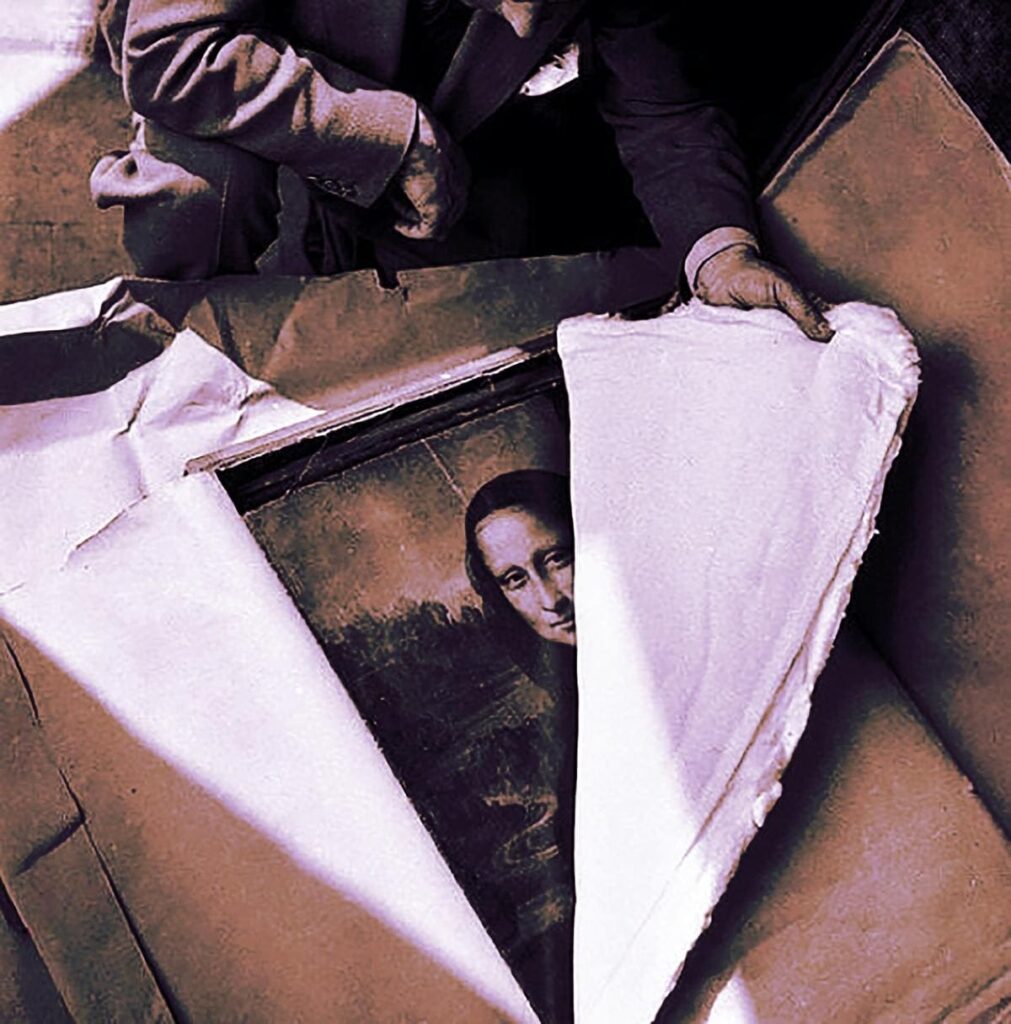
Leonardo da Vinci’s oeuvre is a remarkable convergence of art and innovation, a testament to the enduring power of curiosity and the inextricable link between seeing and understanding. As we examine his legacy, we find the reverberations of his visionary techniques on the canvas of history and contemporary practice.
His influence is neither confined to the golden frames of museums nor the silent vaults of academia; it thrives in the continual dialogue of artists with the world they wish to depict and understand. Thus, we acknowledge not merely the historical significance of his work but the ongoing conversation between Leonardo’s legacy and the evolving language of art in the hands of those he has inspired.
Anita Louise Art is dedicated to art education, great artists, and inspiring others to find and create their art. We love art that uplifts and inspires. #ArtToMakeYouSmile! #ArtToMakeYouHappy!
If you are interested to see any of my art, you can find out more by clicking here. If you are interested in what inspires me and my paintings, you can discover more by clicking here.
We have a free newsletter and would love you to be part of our community; you can subscribe to the newsletter by clicking here. If you have any questions, I would be happy to talk to you anytime. You can reach me, Anita, by clicking here.
Subscribe to our Anita Louise Art YouTube Channel with great videos and information by clicking here.
Join us for our podcast “5 Minutes With Art.” Spend just 5 minutes a week with us to discover and learn about great art and artists. You can find out more about our podcast by clicking here.
Related Questions
Which Ear Did Van Gogh Cut Off Left Or Right? And Other Facts
Vincent Van Gogh cut off his left ear; he painted several paintings of himself with the bandaged ear. The events leading up to the ear cutting were because of artistic disagreements with the artist Paul Gauguin. Cutting off his left ear made the local newspaper’s front page and set off a chain of events that would change Vincent Van Gogh’s life forever.
By clicking here, you can discover more by reading Which Ear Did Van Gogh Cut Off Left Or Right? And Other Facts.
Why Did Vincent Van Gogh Commit Suicide?
Vincent Van Gogh had a mental illness; many believe he was manic-depressive. He was also sad and lonely and felt a huge financial burden. He committed himself to the mental hospital for treatment, but all this made it very difficult for him to do what he loved most, which was to paint.
By clicking here, you can learn more by reading Why Did Vincent Van Gogh Commit Suicide?
Why Are Vincent Van Gogh’s Paintings So Valuable?
Vincent van Gogh was an extremely prolific artist who painted over 900 works of art during his short lifetime. His work is appealing, and his use of colors and brushstrokes help make his art genuinely unique. He inspired many art movements and artists, and Van Gogh left us a legacy of his art and his letters and thoughts.
By clicking here, you can discover more by reading Why Are Vincent Van Gogh’s Paintings So Valuable?

